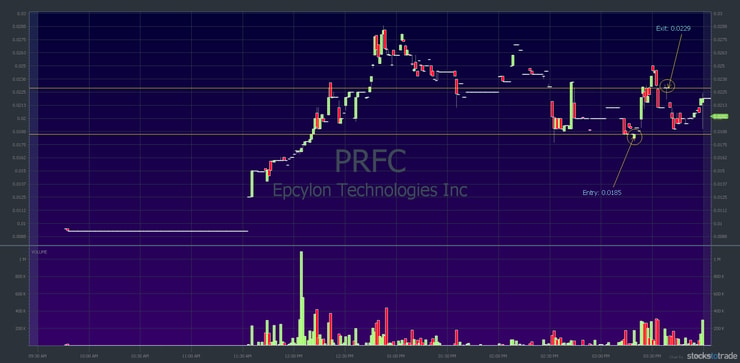Want to invest? The first thing you should invest in is your trading education. Trading is what made everything I do — whether teaching, traveling, giving to charity, or going on foodie adventures — possible. So first go for freedom by applying for the Trading Challenge.
As for non-trading investments…
Once in a while I get asked what I would invest in if I had time and wasn’t focused on teaching. One thing I’d consider is art. I know art is a good investment — I’ve seen the stats. So if I had the time, I’d probably do it. But I don’t have the time right now to learn the strategy, which is exactly what it is even if you just love art.
Table of Contents
Badboi at Art Basel Miami Beach

What kind of art would I invest in? One artist I would definitely invest in is my partner on Karmagawa, Mat Abad (@badboi on Instagram). Mat is now selling prints of his photos with 100% of profits going to charity. He did his first Art Basel show at the recent Miami Beach event on December 4.
Why would I invest in Mat’s prints? It’s not because I’m biased. And I’m not writing about it just because the money will go to charity. Mat is an up-and-coming photographer extraordinaire. I’ve met thousands of photographers in the last few years, and Mat is exceptional. See a small sample of Mat’s work on his website.
So if you’re an art collector, check out Mat’s work. Just so you know, the prints are not inexpensive. This is a serious art-collector-level investment. If you’re an art collector and you want any prints, use the contact email here. Please don’t flood the email account if you’re not serious. As I said, it’s a substantial investment.
If you’re not an art collector — or not yet ready for that level of investment — you can still help the causes Karmagawa supports. Get your hands on some Karmagawa merch here. Use coupon code cybermonday (all one word, lowercase) to save 50% off for a limited time. (Hint: holiday gift giving season is upon us. Why not help spread the word by giving Karmagawa merch to friends and family?)
As always, I’m trading and teaching. With that in mind, let’s get on with the trading lesson of the week…
Penny Stock Trading Lessons
You’ve probably seen the phrase “buy the rumor, sell the news.” And if you follow me, you know I’ve said it in videos and written about it here on the blog. The reason is, a lot of times the big move in a stock happens based on the rumor. So much so that the news is already priced in by the time it’s released.
When that happens, it’s usually best to NOT be in the stock. And you don’t know how the market is actually going to react to the news. So you’ve gotta be careful.
When It Makes Sense to Buy the News
But there are times when a press release has all the elements necessary to give a stock a boost. Especially if there hasn’t been any kind of pre-emptive rumor.
One thing I like to look for is when a new deal announced by a small company also quotes someone from the big company. Kraig Biocraft Laboratories (OTCQB: KBLB) is a good example from last spring. The company issued a press release that quoted the bigger company, Polartec. Over the course of the next couple months, KBLB was one of the hottest stocks in the market. I wrote about it in this post.
Fast forward to December 6…
QuantGate Systems Inc (OTCPK: PRFC)
I dip bought QuantGate Systems Inc. [formerly Epcylon Technologies Inc] (OTCPK: PRFC) — a strong first green day spiker based on this press release. It announced integration of PRFC’s trading app with online broker TradeStation Securities. (I use these brokers.)
Trading Challenge student/Profit.ly user RouxBourbon alerted the chat room. Pay attention because later in this post I’m going to tell you about becoming a self-sufficient trader. I love it when students alert the chat room with solid news before I do. It proves they’re studying.
02:33 PM RouxBourbon: PRFC otc with news
Take note: the press release quoted the president of TradeStation Securities. So when you get a press release about a collaboration between a small company and a big company…
… and the press release quotes someone from the big company…
… it gives the news more credibility. So it’s a stronger catalyst which can lead to bigger spikes.
When You Hit Your Goals, Get Out
When I bought, my thesis was that the stock could bounce back toward its highs going into the close. In my entry comments on Profit.ly I said I wasn’t sure about holding it overnight. And it was a scary/choppy stock so I decided not to hold. Instead, I took profits once it reached my goals. (See all my trades here.)
Take Smaller Positions on Speculative Trades
While this trade met some of my Trader Checklist guide criteria, it was also speculative. The long-term chart isn’t great. And the stock is a true penny stock, having started the day Friday below a penny per share. I don’t do as well trading such low priced stocks. So for me, I chose to take a very small dollar amount position size.
Take a look at the PRFC chart on December 6:

As you can see from the chart, it was very choppy. It ended up working out — and I’m very happy with the 23.78% win. For more information on trading penny stocks see my FREE penny stock guide here.
Let’s get on with some…
Trading Questions from Students
The first question this week comes from a Trading Challenge student. It was asked during my last live webinar on December 6.
“Once you’ve mastered technical analysis, can you take that skill and trade higher-priced stocks/real companies?”
My strategies are pretty niche. I don’t think you have as much advantage on higher-priced stocks because everyone else is trading them. I prefer to fish in my little pond.
(I highly advise reading “The Complete Penny Stock Course.” I get so many questions answered in the book. See chapter II.5, page 145: Technical Analysis and Price Action.)
I like the penny stock niche because it’s full of morons. That might not sound nice, but the competition is very pathetic. And that creates predictable patterns.
When you have bigger companies with higher-priced stocks, the competition is much higher. Why? Because there’s much more money involved. Not only do you have a lot more smart people trading higher-priced stocks, you’re also up against algorithmic traders using very expensive software to do most of the work.
That’s why I trade penny stocks with a small account.
I like to think of it as catching fish in a barrel as opposed to fishing out in the ocean. If you go fishing in the ocean, you’ve gotta wait hours to get a bite. Fishing in a barrel is easy. There’s a lot to learn — especially at first — with penny stocks. But there’s a limit to what you have to learn. And it’s not rocket science.
So I choose easy every single day. Fishing in the ocean is hard and boring.
Next question…
“Tim, why don’t your top students trade the same setups as you all the time?”
It’s amazing how many people try to make this a negative when it’s actually a positive. My top students all studied their butts off and are now self-sufficient traders.
I even get criticism sometimes from people who complain because my top students don’t attend a webinar.
In a perfect world, I teach you enough where you can answer whatever questions you have … yourself. When that happens, you don’t need me any longer. And that’s a big difference between me and a lot of other so-called gurus.
Trader Training Wheels
I’m just training wheels. I don’t want you to be dependent on me. And you shouldn’t want to be dependent on me or anyone else. If I do my job right, you won’t be dependent. You’ll be self-sufficient. Do the work, build your knowledge base, and become a self-sufficient trader.
Final question for this edition of the update…
“When you take a trade, what percentage of your account do you keep in cash?”
It depends on the play. Sometimes I take a speculative trade where I only buy 1,000 shares of a stock trading at $1 per share. With a play like that, it’s not that I think it’s an amazing play. It could be something like a Friday morning spike, or something up on good news, or whatever. But I take a small position size (or small dollar position like the PRFC trade) because it’s speculative.
Identify a Good Setup and Work Backward
This is important — especially if you’re new to trading penny stocks. There’s a lot more to trading than just saying “Oh, that looks good, I’m gonna use 5% of my trading account.” It doesn’t work that way — unless you wanna learn the hard way.
So to help determine your position size you should be asking some other questions like…
- What’s the risk?
- What’s the trading volume? (Hint: you never want to be a big percent of the volume.)
- What works best for you? You don’t figure this out by blowing up your account. You figure it out by testing with very small position sizes, over time.
- What works for your schedule? Sometimes there’s a perfect play but I only have 10 minutes to take a trade. In that case I’d take a small position — if I take the trade at all.
- Where are you trading from? If I’m in a developing country working on a Karmagawa project and I have bad Wi-Fi, I don’t wanna take a big position size.
All those questions are really part of the sliding scale I detail on my “Trader Checklist Part Deux” DVD. I highly recommend you watch it. Study it. Take notes. And use the sliding scale. Every one of the seven indicators comes into play. Once you’ve used the sliding scale enough times, it will become second nature.
Millionaire Mentor Market Wrap
That’s another one in the books.
Have a great week. Study hard. And remember, if there aren’t any good plays, use your time to study more. The better you prepare, the better chance of success. The stock market is a battlefield, so arm yourself.
Comments from Students
Here are just a few of the many comments from students after my last Trading Challenge webinar. The first is from a new Trading Challenge student…
10:31 AM Kbouzan Only one month into the Challenge. Still learning from your past and have watched over 100 hours …. trying to wrap my head around all this great info. So sorry, no good questions at this time.
10:32 AM CrazyWillows → timothysykes: WHOOHHOOO that was a great webinar thanks Tim!!!!
10:32 AM Familyguy → timothysykes: Thanks for a great webby boss!
10:32 AM tim2867 → timothysykes: Thanks for your time.
10:32 AM TonyG1 → timothysykes: tks Tim Excellent Webby! Shalom…
During the live trading webinar on December 6, I didn’t take a trade. And I mentioned to everyone on the webinar that you don’t have to take a trade. Glad to see Profit.ly user kicsaknn got the message…
10:34 AM kicsaknn → timothysykes: Thank you Tim, valuable lesson. I do not have to trade.
10:35 AM Sky_Hi_Trading → timothysykes: Thanks Tim!!! You’re the best!!!!!!!!!!!!!!!!!!!!!!!!!!!!!!!!
What do you think of this post? Comment below, I love to hear from all my readers!





Leave a reply